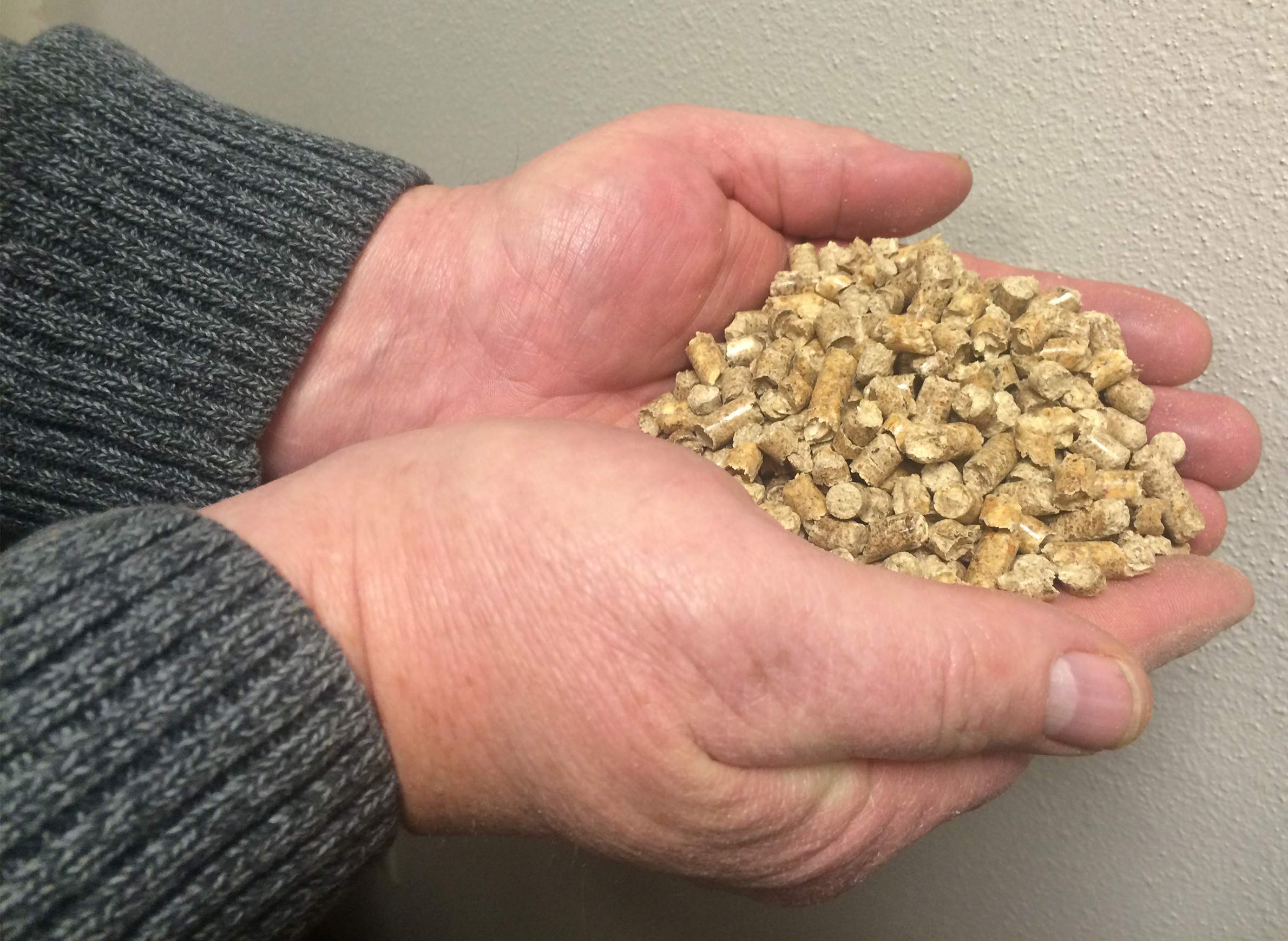
Heating appliances that use wood pellets can attain efficiency levels of up to 90 percent.

Heating appliances that use wood pellets can attain efficiency levels of up to 90 percent.
The early fall is the best time of year to do some planning for winter and keeping homes warm.
Wisconsin’s early economy was built on the region’s plentiful timber. The region still has great timber reserves that are increasing because of reduced manufacturing of paper and wood products in the state.
A report for the Midwest region estimates that 153 jobs would be created for every 100,000 tons of wood pellets produced. One hundred thousand tons of wood pellets would be enough to heat approximately 13,000 homes.
Today, wood that is not suitable for lumber, paper or some other high value product and byproduct from wood manufacturing can be used for fuel in the form of logs, wood chips or wood pellets. Each type has advantages and disadvantages. Logs have the least amount of energy expended for harvesting, but have higher labor costs to harvest, split, store and re-fuel a wood appliance. Wood chips are low cost and can be handled mechanically in bulk, but the equipment cost to feed the chips into a combustion device can be more expensive.
It used to be that wood chips were only appropriate for large buildings, but new high efficiency technology from Europe is available that makes them suitable for a large house or medium sized building. Wood pellets have the highest amount of energy input to harvest and process, but provide a very uniform product that is easy to handle with equipment used to move grain, plus the combustion devices are very reliable. Some wood pellet appliances have combustion efficiencies in the 90 percent range. A University of Wisconsin-Extension publication describes wood-burning appliances for homes and businesses.
Given current low fossil fuel costs, whether burning wood is less expensive depends on the type of fuel used and its cost basis. Natural gas is the lowest cost fuel and cheaper than any type of wood energy. Propane and heating oil are generally higher in price than wood energy. A recent feasibility study for a Wisconsin cheese plant that uses propane for heat for processing showed that converting to a wood chip boiler would mean $136,000 to $276,000 in potential net savings based on varying propane prices. The wood chips for this project could all be sourced within 50 miles at about $40 per ton based on about 3,000 tons per year.
Good candidates for conversion to wood are people who use propane or heating oil and lack access to natural gas, have a source for wood chips or logs within 60 miles or use wood pellets and have someone committed to championing the conversion project. Projects can be small such as heating a greenhouses to providing heat and electricity for a major hospital or producing electricity for the region.
The Wisconsin Statewide Wood Energy Team, of which the UW-Extension is part, lists example projects on converting to wood for heating fuel, fact sheets and people who can be contacted to answer questions. The team also offers free feasibility studies to help businesses and individuals decide whether wood energy would provide an economic benefit to them.
Scott Sanford is an agricultural engineer with the University of Wisconsin-Extension.